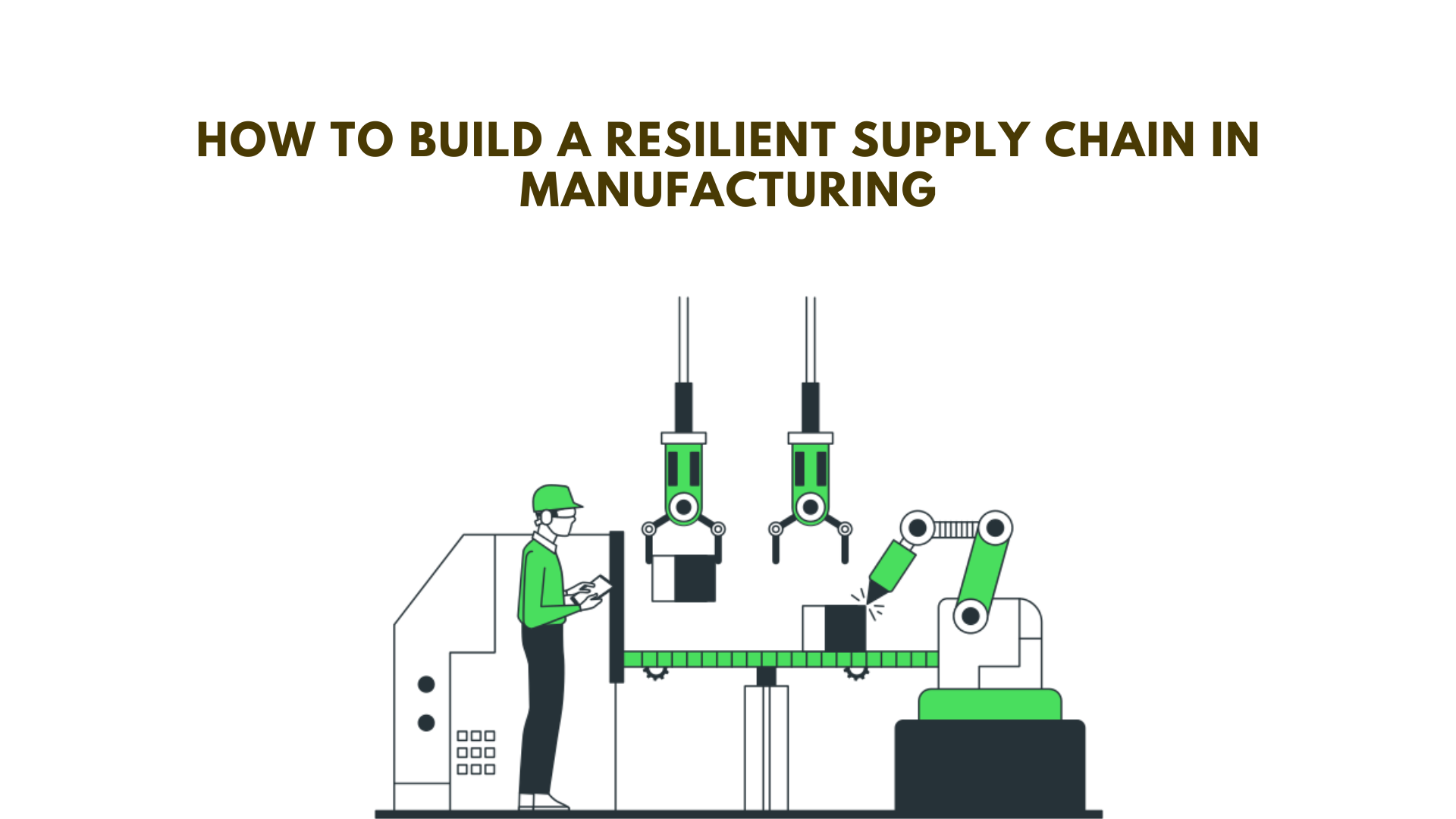In today’s fast-paced and unpredictable world, building a resilient supply chain in manufacturing is more critical than ever. Disruptions can come from various sources, including natural disasters, political instability, economic fluctuations, and global pandemics. A resilient supply chain not only helps manufacturers navigate these challenges but also ensures sustained operations and competitive advantage. Here’s how you can build a resilient supply chain in manufacturing.
Understanding Supply Chain Resilience
Supply chain resilience refers to the ability of a supply chain to anticipate, prepare for, respond to, and recover from disruptions. It involves creating flexible and adaptable processes that can withstand shocks and quickly return to normal operations. Here’s a comprehensive guide to building such resilience.
1. Diversify Suppliers and Sources
Key Steps:
- Multiple Suppliers: Avoid relying on a single supplier. Diversify your supplier base across different regions to mitigate the risk of regional disruptions.
- Local and Global Mix: Balance between local and international suppliers to optimize cost and risk management.
- Regular Audits: Conduct regular audits of suppliers to ensure compliance and capability to meet demands during crises.
2. Implement Advanced Technology
Key Steps:
- IoT and AI: Utilize Internet of Things (IoT) and Artificial Intelligence (AI) to gain real-time visibility into supply chain operations.
- Predictive Analytics: Employ predictive analytics to forecast potential disruptions and plan accordingly.
- Automation: Automate repetitive tasks to increase efficiency and reduce the risk of human error.
3. Strengthen Supplier Relationships
Key Steps:
- Collaboration: Foster strong, collaborative relationships with suppliers. Share forecasts, plans, and risk management strategies.
- Transparency: Ensure transparent communication channels with suppliers to quickly address any issues that arise.
- Long-term Contracts: Establish long-term contracts with key suppliers to ensure stability and reliability.
4. Optimize Inventory Management
Key Steps:
- Safety Stock: Maintain safety stock of critical components to buffer against supply chain disruptions.
- Inventory Visibility: Implement systems that provide real-time visibility into inventory levels across the supply chain.
- Just-in-Time: Balance just-in-time inventory practices with the need for safety stock to optimize costs and resilience.
5. Develop a Risk Management Strategy
Key Steps:
- Risk Assessment: Regularly assess risks across the supply chain, including geopolitical, environmental, and economic risks.
- Scenario Planning: Develop and test scenarios to understand the impact of different disruptions and prepare contingency plans.
- Crisis Management: Establish a crisis management team and protocol to quickly respond to disruptions.
6. Invest in Employee Training
Key Steps:
- Skill Development: Train employees in advanced technologies, risk management, and crisis response.
- Cross-Training: Ensure employees are cross-trained to perform multiple roles, increasing flexibility during disruptions.
- Continuous Learning: Promote a culture of continuous learning and improvement to stay ahead of potential risks.
7. Embrace Sustainability Practices
Key Steps:
- Eco-friendly Practices: Incorporate sustainable practices in the supply chain to reduce environmental impact and increase resilience.
- Sustainable Suppliers: Partner with suppliers who prioritize sustainability and ethical practices.
- Regulatory Compliance: Stay ahead of regulatory changes related to environmental sustainability to avoid disruptions.
8. Leverage Data and Analytics
Key Steps:
- Data Collection: Collect data from various points in the supply chain to gain insights into operations.
- Real-Time Monitoring: Use real-time monitoring tools to detect and respond to issues quickly.
- Analytics Tools: Employ analytics tools to predict trends, optimize processes, and make informed decisions.
9. Implement Flexible Logistics Solutions
Key Steps:
- Multi-Modal Transport: Use multiple transportation modes to ensure flexibility and mitigate risks associated with a single mode.
- Dynamic Routing: Implement dynamic routing systems to adapt to changing conditions and disruptions.
- Third-Party Logistics: Partner with reliable third-party logistics providers to enhance flexibility and resilience.
Conclusion
Building a resilient supply chain in manufacturing is a complex but essential task. By diversifying suppliers, leveraging advanced technology, optimizing inventory management, and fostering strong supplier relationships, manufacturers can create a robust supply chain capable of withstanding various disruptions. Additionally, investing in employee training, embracing sustainability, and leveraging data and analytics further strengthen the supply chain’s resilience. Implementing these strategies will ensure that your manufacturing operations remain competitive and resilient in the face of uncertainty.
By focusing on these areas, manufacturers can build a resilient supply chain that not only survives but thrives amidst disruptions, ensuring long-term success and stability.









